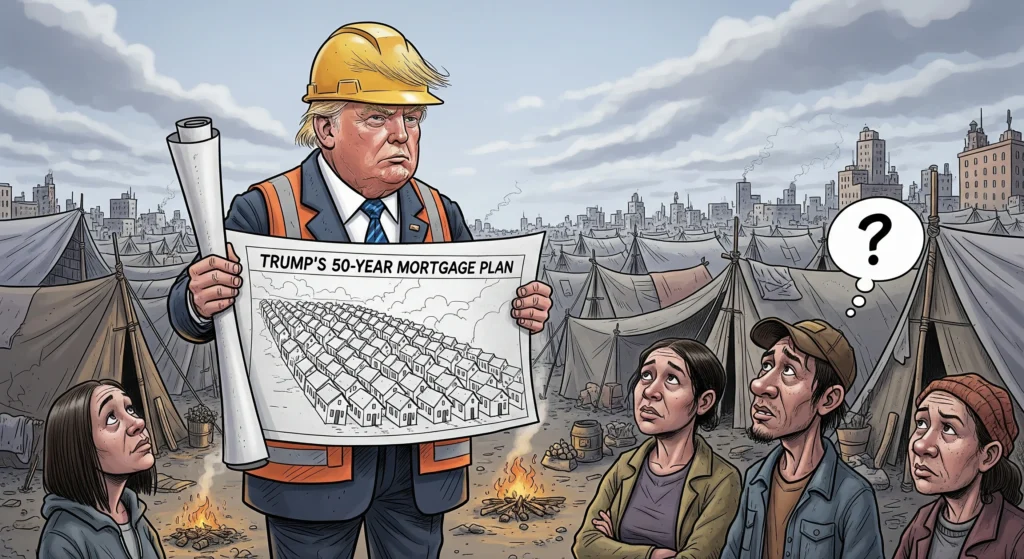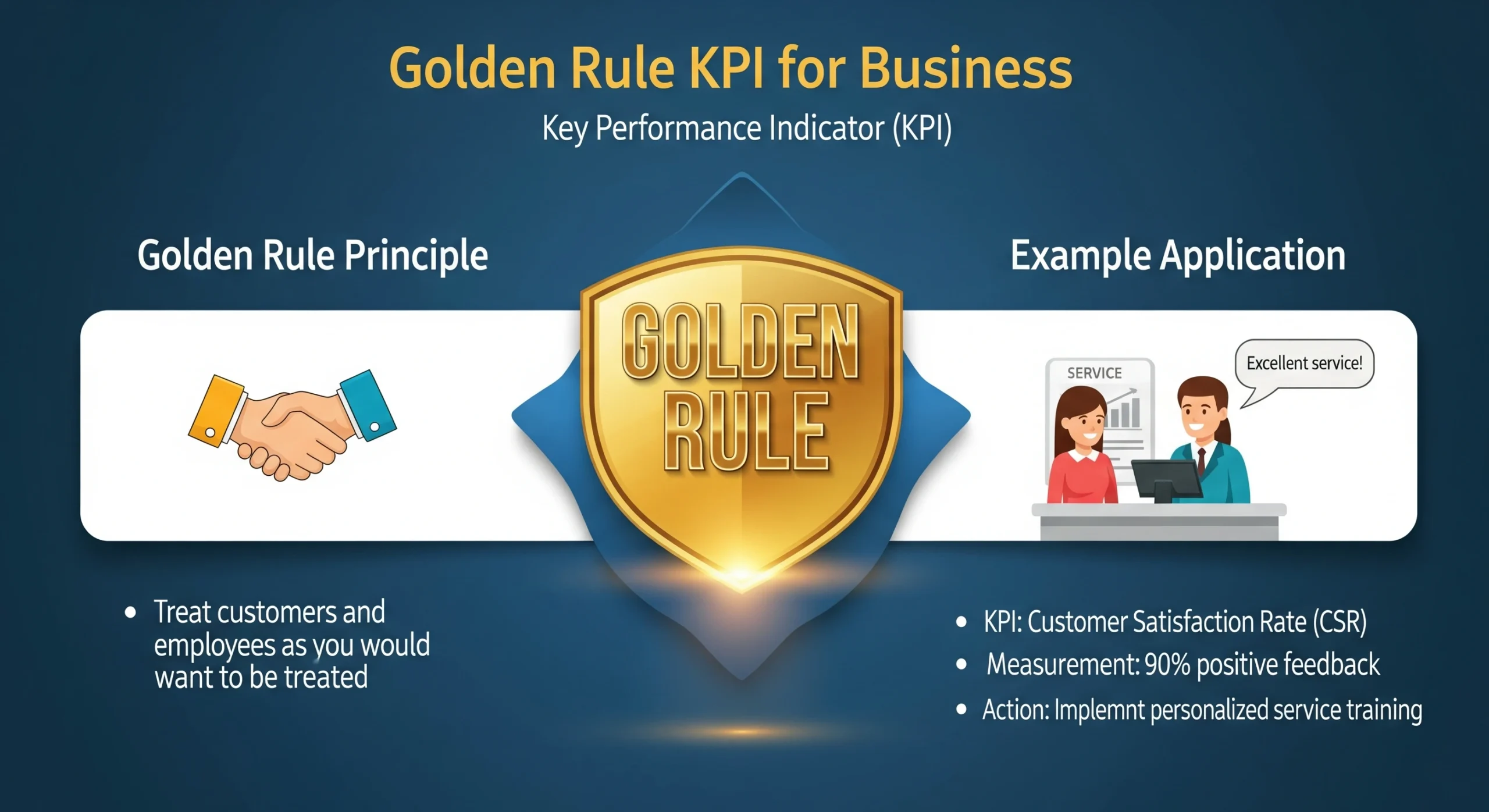The Trump 50 Year Mortgage Plan is being hailed as good news for countless homeless and low-income individuals across the United States. Once implemented, this long-term mortgage plan is expected to increase home-buying capacity by reducing the burden of monthly repayments.
With smaller monthly installments spread over 50 years, more people will finally find it easier to own a home without feeling overwhelmed by large EMIs.
For years, many Americans have avoided taking home loans because high monthly payments often exceeded their income levels. As a result, they postponed homeownership dreams until receiving a salary increase or financial boost.
However, under the Trump 50 Year Mortgage Plan, repayment becomes more affordable, making it a practical and achievable path to homeownership for those who once thought it impossible.
Trump 50 year Mortgage Plan for Homeless People
Many homeless advocates view Donald Trump’s proposed 50-year mortgage plan with cautious optimism. For individuals experiencing homelessness, the idea of ultra-long-term mortgages could symbolize a potential path to stability—especially if paired with low down payments and government-backed credit access.

Key points include:
Lower Monthly Payments: Spreading payments over 50 years could make homeownership more attainable for low-income individuals transitioning out of homelessness.
Hope for Inclusion: Some see it as a signal that housing policy may finally address the needs of the most vulnerable.
Skepticism Remains: Critics argue that without parallel investments in affordable housing, mental health services, and income support, the plan may not reach the chronically homeless.
Risk of Predatory Lending: There’s concern that extended mortgages could be misused by lenders, trapping vulnerable buyers in long-term debt.
Ultimately, while the plan sparks hope, its success for the homeless hinges on broader structural reforms. Keep reading to know more details about this plan.
What is Trump 50 year Mortgage Plan
Former U.S. President Donald Trump sparked a nationwide debate with his proposal for government-backed 50-year mortgages—a plan he calls a “game-changer” for housing affordability.
The initiative aims to cut monthly mortgage payments by extending loan terms far beyond the traditional 30-year standard. Trump’s proposal arrives at a time when the median U.S. home price stands near $364,000 and mortgage rates hover around 6.15%, leaving millions of Americans priced out of the housing market.
Trump’s message, first posted on Truth Social, declared that his plan would “crush high housing costs and get Americans back into their dream homes.”
However, while the idea could make monthly payments more affordable, experts warn that it would significantly increase total interest costs—potentially trapping homeowners in decades of additional debt.
The 2025 Housing Market: A Snapshot of Stagnation
The U.S. housing market in late 2025 shows clear signs of stress. Sales have fallen to their lowest level in three decades, inventory remains tight, and affordability is at a 40-year low. Rising insurance costs, property taxes, and interest rates above pre-pandemic levels have compounded the problem.
Key U.S. Housing Metrics (as of November 2025)
| Metric | Value | Year-over-Year Change | Remarks |
|---|---|---|---|
| Median Home Price | $363,932 | +0.1% | Near record highs |
| Annual Home Price Growth (Sept.) | 1.7% | Down from 5.4% (2024) | Slowing market |
| Existing-Home Sales (Annualized) | ~3.8 million units | -5.2% | Lowest since 1995 |
| Housing Affordability Index (NAHB) | 98.5 | — | Below 100 = unaffordable |
| Median First-Time Buyer Age | 40 years | Up from 31 in 1980 | Reflects delayed ownership |
Sources: Zillow, Redfin, NAHB (2025 data)
In major metros like San Francisco and New York, the income required to afford a median home now exceeds $300,000 per year, more than twice the U.S. median household income. Even in lower-cost regions, affordability remains strained. you can also know complete detail of bank wise mortgage rates in this aquickbuysell.com website.
Inside Trump’s 50-Year Mortgage Plan
Key Features (Proposed)
- Loan Duration: 50 years (600 months)
- Structure: Fixed-rate, federally backed (Fannie Mae & Freddie Mac)
- Target Group: First-time and lower-income buyers
- Expected Rates: ~6.2%, comparable to current 30-year averages
- Launch Timeline: Pilot programs possible by mid-2026 pending congressional approval
How It Works: The Math Behind the Plan
Assuming a $363,932 home with a 20% down payment ($72,786) and 6.2% interest, the difference between 30-year and 50-year mortgages is stark.
| Term | Monthly Payment | Total Interest Paid | Equity After 10 Years |
|---|---|---|---|
| 30-Year | $1,778 | $348,000 | ~25% of loan repaid |
| 50-Year | $1,570 | $651,000 | ~10% of loan repaid |
That’s about $208 less per month, but nearly double the total interest over the loan’s lifetime.
Why Supporters Back the Plan
Trump’s allies and several housing advocates argue that affordability, not subsidy, is the goal. The plan could help millions of new buyers enter the market by reducing monthly costs and lowering debt-to-income ratios (DTI).
Potential Benefits
- 🏡 Increased Accessibility: Could qualify 2–3 million new buyers each year.
- 💵 Short-Term Savings: About $2,500 in annual savings per borrower.
- 🔁 Market Fluidity: May reduce the “lock-in effect,” where homeowners with sub-4% loans avoid moving.
- 🧱 Stimulus for Construction: Could complement Trump’s proposed $1 trillion infrastructure and housing initiative.
Economists estimate this could trigger a 10–15% rise in first-time home purchases, giving millennials and Gen Z buyers long-sought entry into homeownership.
Critics’ Concerns: Debt, Inflation, and Equity Erosion
Not all experts are optimistic. Housing analysts warn that ultra-long loans could inflate housing demand without addressing the root cause—limited supply. Extending loan terms might make ownership more accessible in the short run but risk a debt-driven bubble.
Main Criticisms
- ⚠️ Massive Lifetime Costs: Borrowers may pay up to 86% more interest over 50 years.
- 📉 Slow Equity Growth: Homeowners could still owe over 60% of the loan after 30 years.
- 🏠 Price Pressure: Increased demand could push home prices up 5–7%, erasing affordability gains.
- 🏦 Lender Hesitation: Banks might raise rates 0.5–1% for longer-term risk exposure.
- 🌎 Climate & Risk Factors: Long horizons increase exposure to natural disasters and market volatility.
Brian Wesbury, Chief Economist at First Trust Advisors, cautioned that such long-term loans could “create a cycle of perpetual debt” without solving the affordability crisis.
Comparative Overview: Mortgage Term Impacts
| Mortgage Term | Monthly Payment | Total Interest Paid | Equity Build Speed |
|---|---|---|---|
| 15-Year | High | Low | Fast |
| 30-Year | Moderate | Moderate | Balanced |
| 50-Year | Low | Very High (≈+86%) | Slow |
Sources: FHFA, Newsweek, CNBC
This chart highlights how borrowers trade short-term comfort for long-term cost—a tradeoff at the heart of the Trump mortgage debate.
Market and Political Reactions
Expert Views
- Realtor.com projects a modest 5% sales increase if the plan launches.
- Fortune warns of “trapped generations” burdened by intergenerational mortgages.
- Warren Buffett’s Berkshire Hathaway expects market changes to depend more on Federal Reserve rate cuts than loan term extensions.
- Laura Ingraham, during her Fox News segment, questioned whether “stretching debt over half a century” truly benefits working Americans.
Public Sentiment
- 👍 Supporters: Call it an overdue modernization that matches economic realities.
- 👎 Opponents: View it as financial overreach that could mirror early 2000s subprime risks.
Legislative Outlook and Next Steps
As of November 2025, no official bill or executive order has been filed. However, the Federal Housing Finance Agency (FHFA) and HUD are assessing feasibility and lender participation. The success of such a plan will depend heavily on Congressional approval, regulatory adjustments, and safeguards for consumers.
Next milestones:
- Mid-2026: Possible pilot testing
- 2027–2028: National rollout if reforms pass
- Long-term: Review impact on affordability and debt ratios
The Bigger Picture: Beyond Longer Loans
Housing affordability isn’t just about loan terms—it’s about supply, wages, and regulation. Without new construction and zoning reform, longer mortgages may simply stretch out the pain rather than solve it.
Economists agree: the true fix lies in building more homes, not just lengthening payment timelines.
Conclusion
Trump’s 50-year mortgage proposal captures the public’s frustration with a broken housing market. It promises immediate relief for buyers squeezed by record prices and high rates—but risks decades of added debt and slower wealth accumulation.
For now, it remains a bold idea under review, symbolizing the larger debate between affordability and financial prudence in America’s housing future.




Leave a Reply